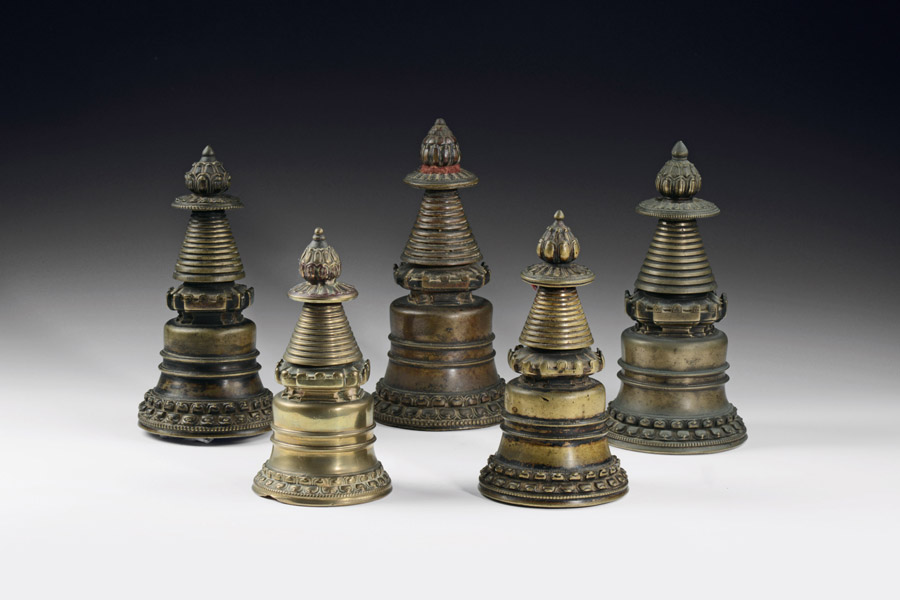Pratapaditya Pal: Roshan Sabavala’s Tryst with Himalayan Art
- click on the image to enlarge | click on the Expand icon upper left to enlarge further
click Esc to close and return to this page
Lot 19: Five Stupas
Bronze
Tibet
12th or 13th Century
Height 8 in. (20.3 cm.) and smaller (5)
Each bell-shaped dome rising from a double-lotus base with beaded rim to a stepped square harmika, supporting a conical parasol below an embellished canopy surmounted by a lotus bud finial.
This type of stupa, identified by its bell shape, is referred to as the Kadam Stupa. It is the most popular form for altars and was introduced to Tibet from India in the 10th and 11th centuries by Lama Atisha Dipamkara Shrijnana (982 - 1054), the great teacher of the second propagations of the Buddhist doctrine who went to Tibet in the 11th century. The bell-shaped dome is believed to represent a form of Mount Meru and above the dome is the high abode, harmika, that represents the heaven of Indra. The upper portion, yashti, has thirteen parasols, chattras, for the stages leading to Enlightenment. Its axis supports a chattra indicating Buddha's supreme attainment. Right on top is a lotus bud finial representing the blossoming of the Buddha's deeds for the benefit of all worlds.
A related example can be found in the Jacques Marchais Museum, illustrated by B. Lipton and N. Ragnubs in Treasures of Tibetan Art: Collections of the Jacques Marchais Museum of Tibetan Art, New York, 1996, catalogue no. 5.
